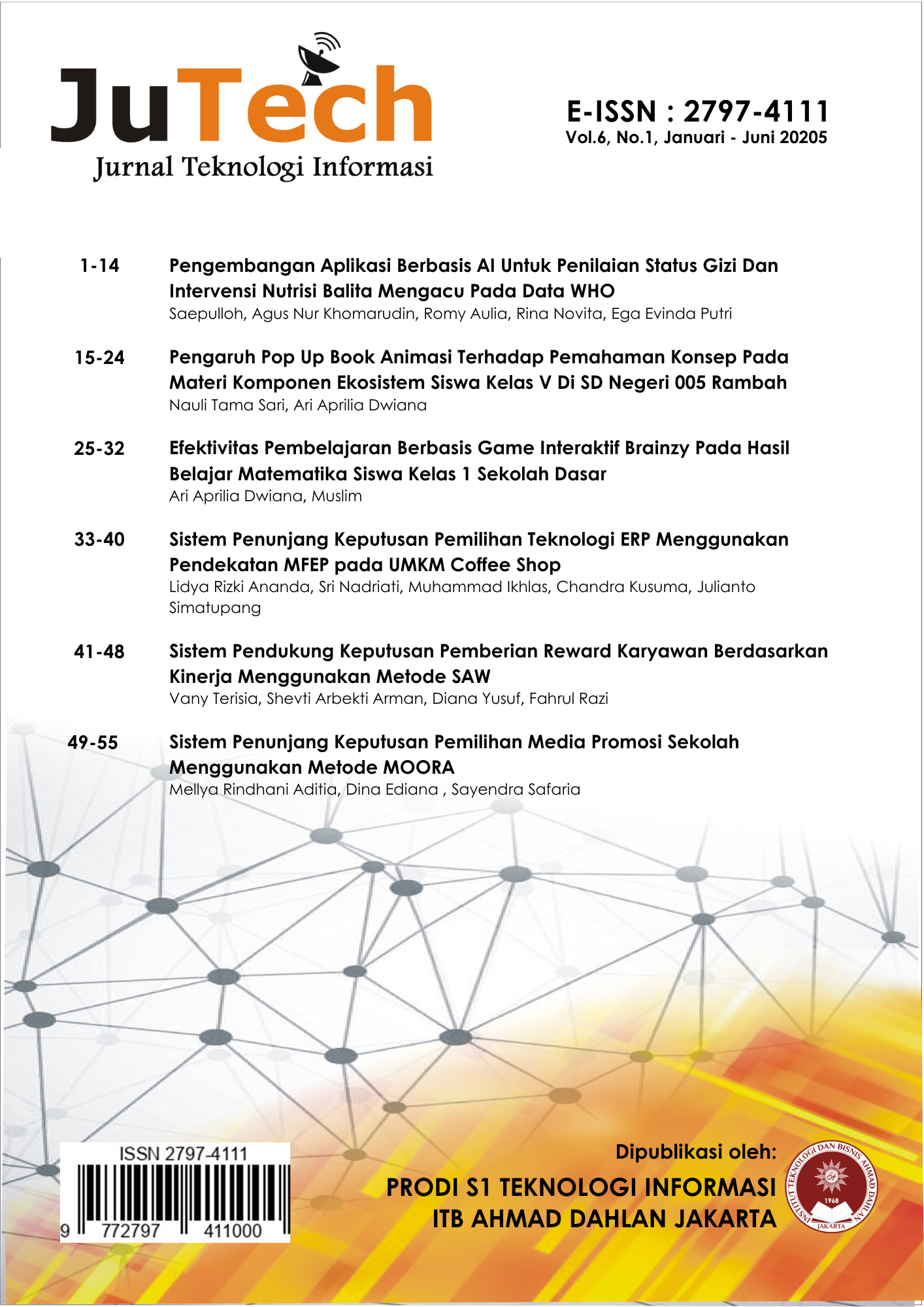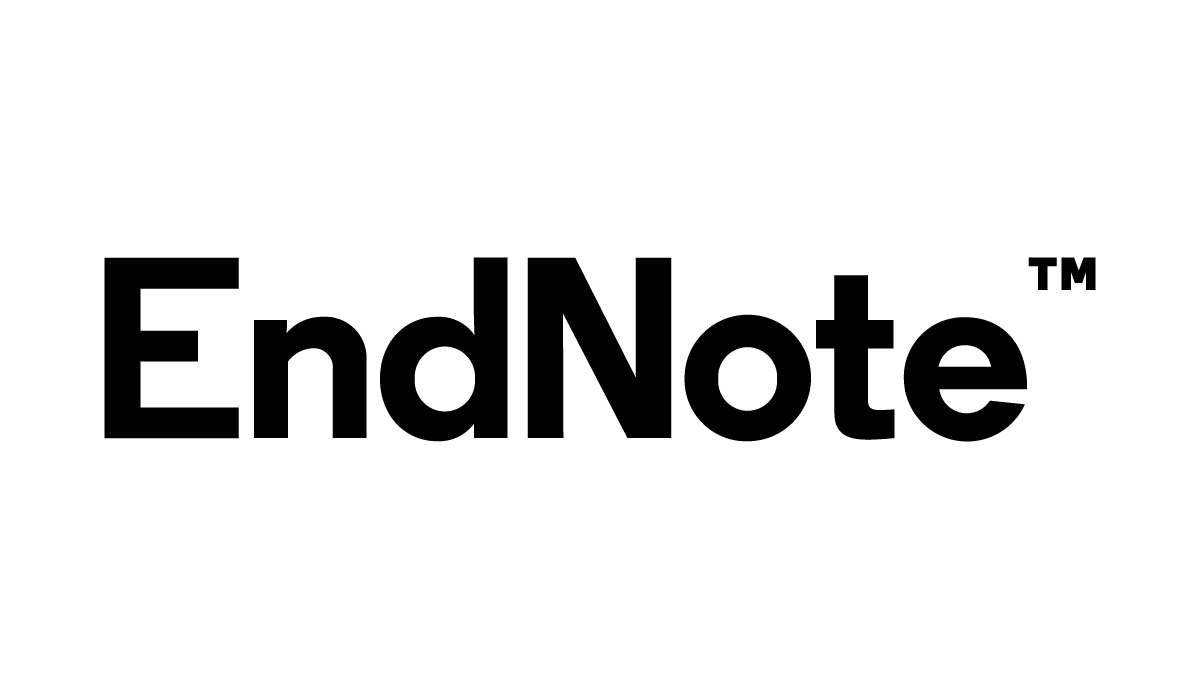Pengembangan Aplikasi Berbasis AI Untuk Penilaian Status Gizi Dan Intervensi Nutrisi Balita Mengacu Pada Data WHO
Abstract
Malnutrition among Indonesian toddlers remains a significant public health challenge, with the prevalence of stunting reaching 24.4% in 2021—indicating that nearly one in four children in Indonesia experiences substantial growth retardation at an early age. The long-term effects of stunting extend beyond physical growth limitations, encompassing reduced cognitive capacity, increased vulnerability to chronic diseases later in life, and diminished economic productivity.
This research aims to develop a web-based application integrated with artificial intelligence (AI) and APIs to: (1) calculate height-for-age and weight-for-age Z-scores based on WHO references, (2) automatically identify the risk of stunting and nutritional status in toddlers, and (3) provide personalized nutritional interventions in the form of local food recommendations tailored to each individual’s condition. The application development follows the Agile Methodology. The final product is an AI-based API application for toddler nutritional assessment and intervention using WHO data as the foundation. The application was evaluated through validity and effectiveness testing. The system validity test resulted in a score of 0.83, indicating a valid classification, while the effectiveness test yielded a score of 0.82, reflecting a high level of effectiveness. Based on these findings, the application has the potential to serve as an innovative tool for healthcare providers and parents in both preventive and curative efforts against stunting, using a data-driven and culturally contextualized approach aligned with Indonesian conditions.
References
Afsharinia, B., Naveen, B.R. and Gurtoo, A. (2024) ‘AI-Based Technological Interventions for Tackling Child Malnutrition’, in AI, Consciousness and The New Humanism. Singapore: Springer Nature Singapore, pp. 221–241. Available at: https://doi.org/10.1007/978-981-97-0503-0_11.
Akseer, N. et al. (2022) ‘Economic costs of childhood stunting to the private sector in low- and middle-income countries’, eClinicalMedicine, 45, p. 101320. Available at: https://doi.org/10.1016/j.eclinm.2022.101320.
Aldisa, R.T. and Abdullah, M.A. (2022) ‘Penerapan Agile Development Methodology dalam Sistem Penjualan Buku dengan Fitur Kategori dan Pencarian’, Building of Informatics, Technology and Science (BITS), 3(4), pp. 547–553. Available at: https://doi.org/10.47065/bits.v3i4.1434.
Annisa Nuradhiani (2023) ‘Faktor Risiko Masalah Gizi Kurang pada Balita di Indonesia’, JURNAL ILMIAH KESEHATAN MASYARAKAT DAN SOSIAL, 1(2), pp. 17–25. Available at: https://doi.org/10.59024/jikas.v1i2.285.
Centers for Disease Control and Prevention, N.C. for H.S. (2024) Growth Charts - Data file for the CDC Extended BMI-for-Age Growth Charts, cdc.gov.
Efriyanti, L. et al. (2024) ‘Pengembangan Hybrid Apps Expert System sebagai Upaya Meningkatkan Pengendalian Hama dan Penyakit Tanaman Cabai’, 23, pp. 359–367.
Fitria, E. et al. (2023) ‘Digital Library Development at MAN 1 Bukittinggi as an Accessibility Convenience Support for Users’, Jurnal Teknologi dan Sistem Informasi (JURTEKSI), 9(2), pp. 133–140. Available at: https://jurnal.stmikroyal.ac.id/index.php/jurteksi/article/view/2013.
Hariguna, T. (2024) ‘Health and Socio-Demographic Risk Factors of Childhood Stunting: Assessing the Role of Factor Interactions Through the Development of an AI Predictive Model’, Journal of Applied Data Sciences, 5(4), pp. 2175–2186. Available at: https://doi.org/10.47738/jads.v5i4.612.
Hidayah, N.A. and Nur Muhammad Asnadi (2024) ‘Penerapan Metode Agile Dalam Manajemen Proyek: Systematic Literature Review’, Jurnal Perangkat Lunak, 6(1), pp. 43–53. Available at: https://doi.org/10.32520/jupel.v6i1.2858.
Khomarudin, A.N. et al. (2024) ‘Rancang Bangun Aplikasi Hybrid Manajemen Surat Dan Efektivitasnya di Jurusan Rekayasa Pertanian dan Komputer’, Jurnal Teknologi Sistem Informasi, 5(2), pp. 1–13. Available at: https://doi.org/10.35957/jtsi.v5i2.8768.
Khomarudin, A.N., Novita, R. and Anita, R.S. (2023) ‘Pengembangan Aplikasi Hybrid Mobile Sosiometri sebagai media pendukung pembelajaran di laboratorium bimbingan konseling’, Jurnal Inovasi Teknologi Pendidikan, 9(3), pp. 339–354. Available at: https://doi.org/10.21831/jitp.v9i3.52232.
Kustiawan, T.C. et al. (2022) ‘Use of mobile app to monitoring growth outcome of children: A systematic literature review’, DIGITAL HEALTH, 8, p. 205520762211386. Available at: https://doi.org/10.1177/20552076221138641.
Mahardhika, B.J. et al. (2024) ‘Bisnis Platform Pencatatan Nutrisi Makanan Untuk Membantu Pola Makan Yang Sehat’, Wawasan : Jurnal Ilmu Manajemen, Ekonomi dan Kewirausahaan, 3(1), pp. 71–85. Available at: https://doi.org/10.58192/wawasan.v3i1.2762.
Mayati, S., Supriadi, S. and Khomaruddin, A.N. (2021) ‘Perancangan Aplikasi E-Discussion Pada SMA Negeri 1 Banuhampu’, CSRID (Computer Science Research and Its Development Journal), 11(2), p. 118. Available at: https://doi.org/10.22303/csrid.11.2.2019.118-129.
Nur Khomarudin, A., Novita, R. and Aulia, R. (2023) ‘Pengembangan Smart Laboratory Melalui Aplikasi Presensi Sebagai Bentuk Monitoring Kehadiran Dosen’, Jurnal Device, 13(2), pp. 168–176.
Permana, A.A., Raharja, B. and Perdana, A.T. (2023) ‘Artificial Intelligence for Diagnosing Child Stunting: A Systematic Literature Review’, Journal of System and Management Sciences, 13(6), pp. 605–621. Available at: https://doi.org/10.33168/JSMS.2023.0635.
Sugiyono (2008) Metode Penelitian Pendidikan (Pendekatan kuantitatif, kualitatif dan R & D). Alfabeta.
Sugiyono (2010) Kuantitatif’s Research Method dan R&D. Bandung: Alfabeta.
Wei, R. et al. (2020) ‘A method for calculating BMI z-scores and percentiles above the 95 th percentile of the CDC growth charts’, Annals of Human Biology, 47(6), pp. 514–521. Available at: https://doi.org/10.1080/03014460.2020.1808065.
Zulvi, M. sari (2021) ‘Systematic Literature Review Penerapan Metodologi Agile Dalam Berbagai Bidang’, Jurnal Komputer Terapan, 7(2), pp. 300–313. Available at: https://doi.org/10.35143/jkt.v7i2.5116.
Copyright (c) 2025 Jurnal Teknologi Informasi (JUTECH)

This work is licensed under a Creative Commons Attribution 4.0 International License.












